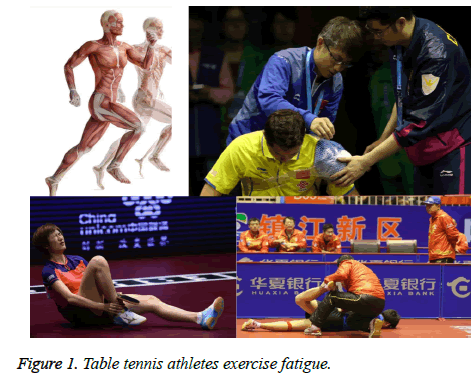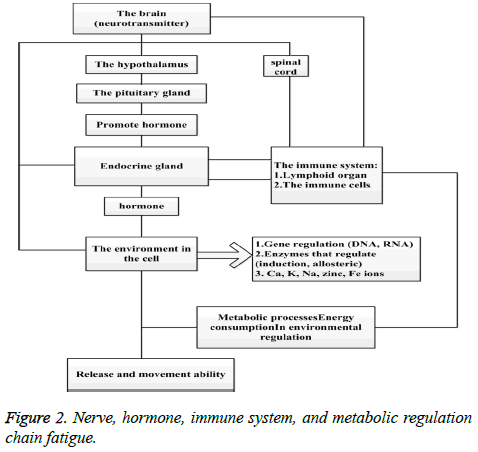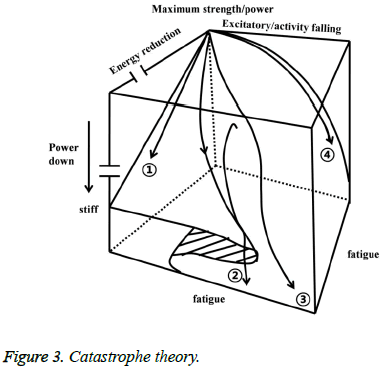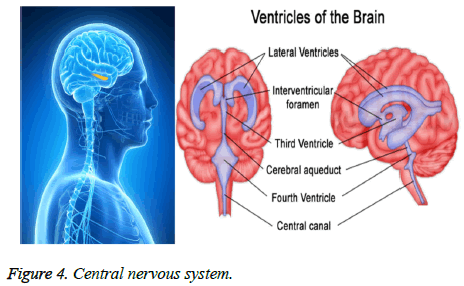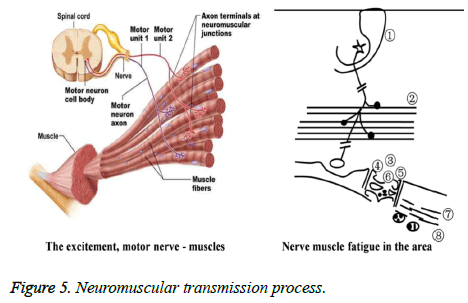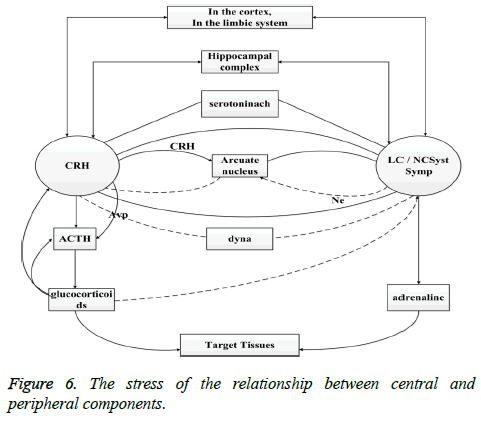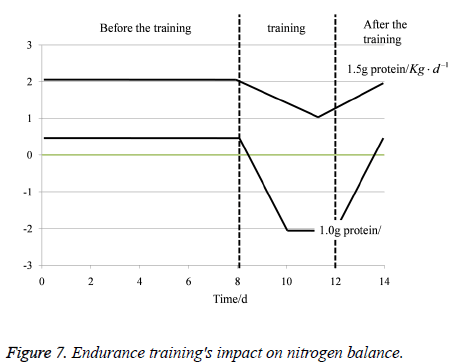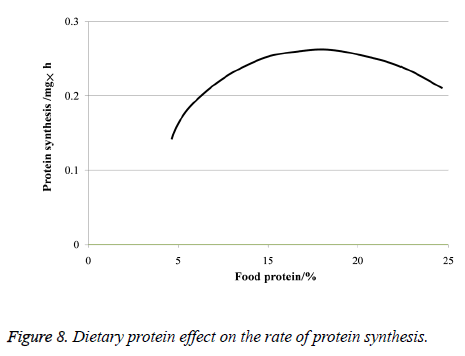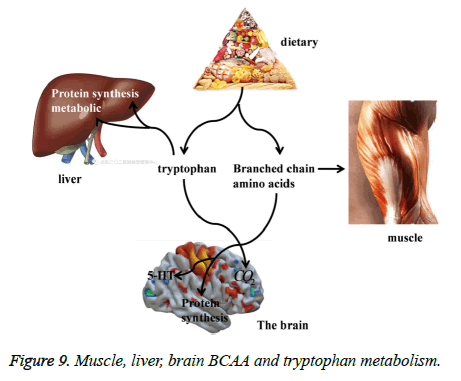ISSN: 0970-938X (Print) | 0976-1683 (Electronic)
Biomedical Research
An International Journal of Medical Sciences
Research Article - Biomedical Research (2017) Advances in Health Science and Biotechnology Application
Application research of biomedicine in elimination of sports fatigue of table tennis players
Bai Lei*
Department of Physical Education, Zhongnan University of Economics and Law, Wuhan, Hubei, PR China
- *Corresponding Author:
- Bai Lei
Department of Physical Education
Zhongnan University of Economics and Law, PR China
Accepted date: November 8, 2017
The antagonism of table tennis is very strong and the competition is very fierce. Athletes are prone to exercise fatigue in high intensity and heavy load training. How to effectively eliminate sports fatigue has been the focus of domestic and foreign research institutions. In this paper, a series of links between the brain and muscles of table tennis players that could cause the fatigue were studied. Sports fatigue was analyzed from the perspective of biomedicine, and the neural, hormonal, metabolic, and immune regulatory fatigue chains were proposed. It was found that the ATP (t=5.12, P<0.05) and CP (t=4.27, P<0.05) in the brain were significantly reduced during the exercise fatigue. In addition, supplement of sugar, ATP, protein, amino acids and other nutritional supplements was beneficial to eliminate sports fatigue of table tennis players. Studies show that from the perspective of biomedicine, one of the most important factors in the development of exercise-induced fatigue is the large amount of energy consumption in the body, so it is necessary to make a reasonable nutritional supplement for the recovery and elimination.
Keywords
Biomedicine, Table tennis, Sports fatigue, Elimination
Introduction
Table tennis is an international sport. Although it is mainly based on skills, it is also very confrontational. Therefore, in the long training or competition athletes consume a lot of physical strength and energy. When table tennis players are in the game and training, their nervous systems are highly nervous. Cardiovascular, respiratory and endocrine systems are in a higher state, which easily leads to strain, sprain, strain and other accidents [1]. In order to maintain a high state of motion, table tennis players should accept a variety of high-intensity trainings every day. Long term mechanical load and monotonous training subjects reduce the excitability of the brain of the athletes, resulting in a temporary fatigue of limb muscles [2]. If we do not adjust quickly, fatigue will accumulate easily, which will not only affect the training effect, but also lead to the wrong dynamic stereotype. Therefore, after the high intensity training and competition, how to eliminate sports fatigue, avoid excessive fatigue, quickly and fully restore strength and energy, and face the future learning and training with abundant energy have been the problems that coaches and athletes are concerned about [3].
Sports fatigue is a complex multi-level process, which includes many aspects, such as physiology, psychology and spirit. The concept of fatigue is developed with the deepening of the study [4]. The muscle soreness caused by exercise in biomedicine is divided into two types. The first is the pain immediately after the movement, and it disappears very quickly, which is called acute muscle soreness [5]. And the other type is the pain that appears a few hours or one day after the exercise. Accompanied by fatigue, there are symptoms such as muscle stiffness and spasm. The muscle pain disappears slowly, and it can be fully recovered 3 to 4 d or even after 6~7 d, and this symptom is called delayed onset muscle soreness or fatigue after exercise. There are significant differences between muscle soreness and strain [6]. In fact, muscle soreness is a normal, positive physical performance. It is easy to produce significant muscle soreness after exercise with high intensity and less adaptation. These symptoms will naturally disappear after a period of rest. When the players do the same exercise again, muscle soreness symptoms will be significantly reduced or not [7]. The muscle strain caused by exercise is different. Muscle or ligament injury can result in a large area of pathological changes of the skeletal muscle, such as cell degeneration, cell necrosis, etc., which not only affects the continued movement or training, but also may bring more serious consequences. Self-identification of muscle strain and ligament strain s may occur as a result of a destructive action due to strain and muscle sorenes, and muscle soreness is gradually increased [8]. Muscle soreness can be relieved by rest, traction, massage, etc. And muscle (or ligament) damage must be solved by medical means [9]. In order to move fast with explosive power, table tennis players must have a good ability to provide ATP-CP. At the same time, a full game lasts 48 min. In a high level of the game, a good athlete needs to swing about 5400 times with the distance of 8400 m, which requires athletes with good speed endurance and strength endurance. Therefore, athletes easily lead to peripheral fatigue after training and competition [10].
The purpose of this study is to explore how to effectively eliminate sports fatigue. In order to effectively eliminate the fatigue of table tennis athletes, this paper puts forward the method of eliminating sports fatigue. The second section introduces the causes of the sports fatigue of table tennis players. In the third section, we analyse the sports fatigue from the point of view of biomedicine. In the fourth section, the details of the nutritional supplement to eliminate exercise fatigue are introduced. In the fifth section, we briefly introduce other methods to eliminate the fatigue. The last are the conclusions.
The Generation of Sports Fatigue of Table Tennis Players
Research grouping
According to the exercise, players were divided into before exercise group and after exercise group.
Definition of sports fatigue
Sports fatigue can be divided into physical fatigue and mental fatigue. The two kinds of different kinds of fatigue have different main manifestations. The main manifestation of physical fatigue is the decline of motor ability. Psychological fatigue is mainly manifested in the change of behavior. Physical fatigue should be physical and mental changes [11]. At present, there are two main aspects of the fatigue mechanism. The first is the fatigue chain from the central to the peripheral nerve muscle conduction, nerve endocrine, immune and metabolic regulation. The second is the catastrophe theory from the analysis of the whole concept of human beings [12]. The two aspects of the theory are complementary to each other, which focus on different angles in the analysis of the problem.
Causes of fatigue in table tennis training
Overload training is the main cause of fatigue. Specifically, when the training is not scientific, the load intensity is not allowed to grasp. The training is carried out too fast, and the recovery time is too short, with the use of improper means of recovery [13]. Athletes’ fatigue has not been restored and eliminated in the long-term accumulation, which is again added with excessive exercise load (Figure 1). For the game, with too many games and short interval, the body and mind should maintain a high degree of stress for a long time. The athletes should participate in high intensity training when the illness or injury is not good.
Fatigue is mainly manifested in the nervous system, cardiovascular system and skeletal muscle system. The fatigue of the nervous system begins with the cerebral cortex. When the player's reaction, attention and strain are all beginning to decline, it may be the nervous system fatigue. The fatigue of cardiovascular system is very common, and its physiological index is the standard of training intensity. Skeletal muscle fatigue occurs after exercise load. We can determine whether the muscle hardens or whether it is painful to adjust the fatigue [14].
Analysis of sports fatigue from the perspective of physiology and medicine
Fatigue chain: In the high intensity training or competition of table tennis, the working ability of muscle is weakened, and the exercise fatigue appears. During the process of fatigue, there is a series of links between the brain and muscles [15]. As early as in 1980, Edward proposed the neuromuscular fatigue control chain of these links. With the deep study of fatigue, the fatigue chain of nerve, hormone, metabolic and immune regulatory is listed, as shown in Figure 2.
Because sports fatigue is a combination of many factors, the change of one or several factors at the same time can cause fatigue. Therefore, the theory of mutation combines the energy consumption in the cell, the decrease of muscle strength, the change of muscle excitability and activity. When these factors change to a certain extent, it is expressed in the form of fatigue, in order to protect the body from exhaustion. It can be seen in Figure 3, the pathway one is pure energy expenditure, in which ATP is exhausted with muscle stiffness, and sports fatigue cannot develop to this point; the pathway two is in the process of reducing energy and excitability, there is a rapidly decreasing mutation peak, and the excitability also collapses, which is used to carry on the energy reserve to deal with its decline and the change, accompanied by the decline of power. It is the characteristic of the fatigue catastrophe theory [16].
Neural fatigue
When the table tennis players are in training and competition, the nerve center will work with long working hours and strong strength. If the central motor nerve disorders, the excitability of the motor nerve also changes, and it can impact the spike action potential at the neuromuscular junction (Figure 4). Changes of motor nerve excitability can also reduce the frequency of nerve impulse release or attenuation, resulting in fatigue.
It was proposed for metabolic changes in 1971 that ATP and CP levels in the brain were significantly reduced during exercise induced fatigue. In addition, the content of rincreased with the decrease of glycogen content. In recent years, the more detailed work on the changes of neural fatigue metabolism during exercise is the change of the concentration ratio of tryptophan and Branched Chain Amino Acids (BCAA). It can affect some precursors of neurotransmitters in the brain (phenylalanine, tyrosine and tryptophan) into the brain, and tryptophan can be converted to 5-hydroxytryptamine (5-HT). At the same time, the content of 5-HT increases, which can stimulate appetite, tiredness, fatigue and other symptoms of sleep disorders. During strenuous exercise, the 5-HT in the brainstem and hypothalamus would increase, as shown in Table 1. Therefore, increasing the supply of BCAA in nutrition can help to maintain the ratio of BCAA to tryptophan, which can reduce the effect of 5-HT on fatigue [17].
| Brain area | Acid tryptophan | 5HT | 5HIAA | |||
|---|---|---|---|---|---|---|
| Before exercise | After exercise | Before exercise | After exercise | Before exercise | After exercise | |
| Cortex | 23 | 34 | 2.9 | 2.6 | 1.8 | 1.9 |
| Cerebellum | 23 | 30 | 0.59 | 0.58 | 0.50 | 0.58 |
| Hippocampus japonicus | 25 | 35 | 2.1 | 2.2 | 1.9 | 2.3 |
| Striatum | 27 | 35 | 2.3 | 2.6 | 2.5 | 3.2 |
| brainstem | 24 | 32 | 3.6 | 4.1 | 2.7 | 3.2 |
| Hypothalamus | 25 | 34 | 4.9 | 5.7 | 3.0 | 3.9 |
Table 1. Strenuous exercise for the brain 5-HT, the influence of the concentration of tryptophan and HIAA (Nmol.g-1).
In recent years the study of ammonia on nerve fatigue effect has shown that ammonia content in brain increases during exercise, and the reasons may include neurotransmitter deamination; oxidative deamination of nerve endings and glial cells; the strengthened purine nucleotide cycle to generate ammonia; the ammonia increased generation of in muscle and blood ammonia through the blood-brain barrier [18]. The increase of ammonia can cause a decrease in the activity of many enzymes, and decrease the rate of ATP synthesis, which leads to various kinds of fatigue symptoms, such as thinking and consciousness variation, muscle weakness, shortness of breath and so on.
Neuromuscular transmission
In the process of neuromuscular transmission, we mainly study the changes in the membrane and muscle cells. In Figure 5: 1. Central nervous system fatigue due to lack of motor nerve excitability; 2. Degeneration or loss of axonal branching activity; 3. Loss of afferent terminals or release of neurotransmitter activity at the neuromuscular junction (presynaptic failure); 4. The loss of the posterior membrane and the ability of complete depolarization; 5. The ability of the muscle fiber membrane to lose the activity potential or the amplitude is too low; 6. The decline or loss of the bone system and sarcoplasmic reticulum calcium release. The potential activity caused by decreased muscle strength; 7. Muscle contraction system; 8. Mitochondria.
The factors related to the ability of muscle contraction are: the first is the metabolic function: the transportation of glucose and fatty acid; the second is the regulation of PH: the exchange of Cl-1/HCO3- and Na+/H+ in and out of membrane by hydrogen ions and lactate ions; the third is the transportation of Na+/Ca+ by calcium ion and the exchange of Ca++/ATP enzyme; the fourth is the exchange of Na+ and K+ cells inside and outside, the extracellular K+ increases, intracellular Na+ increases, the membrane potential changes, and the activity of enzyme can cause the disorder of excitability; the fifth is the change of polypeptide and catecholamine receptor sites. The changes of such factors lead to cell membrane dysfunction and fatigue.
Intracellular metabolic changes
The direct energy source of the muscle during exercise is called ATP, which can be quickly synthesized after being consumed. When the ATP concentration in muscle is the highest, the concentrations of ADP, AMP and IMP relative are lower [19]. The value of ATP/ADP can play an important role in regulating metabolism. As can be seen in Table 2, during the sports fatigue, ADP, AMP and IMP increase significantly, while the ratio of ATP/ADP is reduced, so that the metabolic rate of sugar is reduced, the energy supply is hindered, resulting in reduced working ability. The characteristics of lactic acid accumulation during exercise are summarized in this paper, as shown in Table 2. We can see that in the accumulation of lactic acid, fatigue performance of ATP and CP decreases, lactic acid increases, and pH value decreases; in the absence of lactic acid accumulation, muscle glycogen decreases.
| Generating material | Quiet time | 1007.Vo2max bicycle sports to fatigue | 667.mvc isometric force to fatigue |
|---|---|---|---|
| IMP | 0 | 3.8 ± 0.8 | 3.6 ± 0.6 |
| ADP | 2.7 ± 0.1 | 3.5 ± 0.2 | 4.2 ± 0.3 |
| AMP | 0.08 ± 0.02 | 0.19 ± 0.02 | 0.26 ± 0.04 |
| HL | 4 | 100 ± 4 | 79 ± 3 |
Table 2. The human body in the different nature of sports fatigue mmol/Kg-1 DM.
Endocrine regulation
Changes in the endocrine regulation of exercise can cause a series of changes in the body. But the most obvious change is the increase of adrenaline and adrenal hormones in the pituitary adrenal medulla and adrenal cortex, which can enhance the catabolic capability, so that it can adapt to the needs of exercise stress, as shown in Figure 6. In particular, the pituitary adrenal cortex plays a leading role.
A large number of studies have proved that the endocrine imbalance is the main factor leading to the decline of motor ability, and endocrine disorders are mainly manifested in the nervous endocrine system function decline. The increase in the magnitude of the hormonal changes during exercise is reduced (Table 3), which begins at a subnormal level, and then falls. As a result, two kinds of changes occur in the body, one is the function decline of maximum level; the other is the longest time to maintain the movement at a certain level.
| Name | Change characteristics |
|---|---|
| Glucocorticoid hormone | Down about 50% |
| ATCH | reduce |
| Adrenal medulla hormone | Down about 50%~70% |
| High blood glucose | Reduce |
| Growth hormone | Reduce |
| Testosterone | Decline |
Table 3. Changes of serum levels of some hormones during exercise fatigue.
Application of biomedicine in the elimination of sports fatigue
From the point of view of biomedicine, an important factor in the generation of exercise-induced fatigue is a large number of energy consumption in the body, so that it must be restored to a reasonable nutritional supplement.
Sugar supplement
Sugar is the main energy supply in exercise, and it can be decomposed to generate energy in aerobic or anaerobic environments. CO2 and H2O are the final products of the aerobic metabolism of sugar, which do not cause drastic changes in the internal environment. And in the process of anaerobic metabolism, lactic acid is generated in the exercise. During exercise, it cannot only be oxidized in slow muscle and heart, but also produce sugar in the liver, which will not increase the insulin effect. Therefore, the supply of carbohydrates in motion is very important [20]. For table tennis players in the training period, the amount of sugar in the diet should be 55%-60%. The type of sugar should adapt to the requirements of training, as shown in Table 4.
| Name | Function characteristic | Recovery period to eat sugar |
|---|---|---|
| Starch | To accelerate muscle glycogen synthesis, in the recovery period of second days is better than glucose | |
| Sucrose | Synthetic muscle glycogen, liver glycogen | Total amount not more than 650 g/d, should be based on consumption and recovery requirements to add different types of sugar |
| Fructose | Liver glycogen, muscle glycogen | |
| Glucose | Improve blood sugar the fastest, glycogen synthesis |
Table 4. Recovery of glucose in vivo during recovery period.
When table tennis players are in training and competition, the nerve center will work with strong strength for long hours. When the central nervous system is working, the energy comes mainly from glucose. The brain's glycogen reserves are very small, so they need to rely on blood sugar to supplement. The body's glycogen reserves are directly related to the level of blood sugar. Muscle glycogen can provide the energy needed for muscle contraction, and the storage of glycogen is an important factor to increase the blood glucose concentration in a long time. Therefore, in order to timely supplement sugar and improve liver glycogen reserves, they need for a reasonable intake of starch, glucose, sucrose, fructose and other substances. The focus should be placed on the starch polysaccharide, because its energy supply is relatively smooth and durable. The supply of sugar before and after the training should be glucose, sucrose and fructose. Sugar supplement can make blood glucose concentration increase rapidly and maintain a high level of 30~60 min, promote the absorption and utilization of central nervous system, muscle blood sugar, and reduce the consumption of endogenous sugar reserves. A large number of studies on the problem of the athlete's sugar show that the level of muscle glycogen before exercise is related to the maintenance of speed endurance time. Table 5 lists the sweets before the table tennis match.
| Before the game | Sugar method | Effect |
|---|---|---|
| 3d | Glycogen filling method: before the 3 to carry out large load training, and then a high sugar diet, sugar accounted for more than 70% of total calories, pay attention to the selection and ratio of sugars. | To increase muscle glycogen 3~4 times |
| 30 min before 2 h | According to 2/weight following strict selection of types of sugar, sugar, and to avoid the effect of insulin | Maintaining blood glucose stability |
| On the way drinks | Low permeability of oligosaccharides to drink, sugar supplement per hour should be less than 80 for the best | Maintaining blood glucose stability |
Table 5. Eat sugar before table tennis match method.
ATP supplement
Table tennis is a very demanding sport that requires the player to play the maximum speed and keep it in a stable standard for a long time. This requires a faster rate of ATP synthesis in the brain. In cells, ATP is very small, and it is not able to directly absorb blood and adjacent cells ATP. ATP supplementation is performed in vitro and transformed into ADP in the body. It enters into cells and mitochondria, thereby promoting oxidative phosphorylation. In addition, ATP can greatly enhance the activity of phosphorylase in the role of adenylate cyclase, so that the rate of glycogen decomposition is accelerated, and the concentration of glucose is increased. Creatine phosphate and creatine combine to form a creatine phosphocreatine energy system, and its function is to transport the energy generated by the metabolic process of mitochondria to the area of energy.
Power and protein
Protein: Table tennis leads to increased protein breakdown. If the athlete's intake of food is also provided in accordance with the amount of normal people, it will lead to protein malnutrition, thus showing a negative nitrogen balance (Figure 7). Under normal circumstances, with the increase in food protein, muscle protein synthesis rate will increase accordingly. However, there is no positive correlation between the protein amount and protein synthesis in food. When it exceeds 15% of the total heat, it cannot be used, as shown in Figure 8. And in general training, it only increases the synthesis of 7 g/d. Therefore, with the increase of protein, strength training can enhance the muscle strength of athletes.
Amino acid supplementation
Athletes’ injection or oral amino acid has two main functions. The first is to accelerate the secretion of growth hormone, thereby promoting the regulation of muscle and bone growth. For example, the injection of arginine, methionine, phenylalanine, lysine and histidine can promote the secretion of growth hormone. After administration of arginine and lysine, the secretion of auxin also increases. The second effect is to reduce the effect of the 5 amines on brain working ability. Branched Chain Amino Acids (BCAA) in foods can be used as muscle energy. When proteins or amino acids acts as a source of energy, it generally accounts for about 10% of the total energy, while it only accounts for about 4% of the sugar supply. So it does not have a dominant position in terms of energy. The current study has found that the main role of BCAA is to maintain the ratio of tryptophan to BCAA, which allows the brain to function normally, thereby reducing exercise-induced fatigue (Figure 9).
In addition, there are trace elements (Fe, Zn, Cn, Se, etc.) and vitamins in nutrition factors. For example, iron is a component of catalase, peroxidase and succinate dehydrogenase. Copper, zinc and manganese are the essential components of mitochondrial superoxide dismutase, which can be used to separate oxygen free radicals. Selenium is an essential component of oxygen free radical scavenging enzymes such as glutathione peroxidase. The addition of copper, zinc, manganese, iron, selenium and other minerals can enhance the body's metabolic function, delay and eliminate exerciseinduced fatigue.
Hormonal regulation
In the stress of table tennis, reproduction, growth and immune systems are directly affected by stress. In the relationship between stress and sex hormones, the gonad axis is inhibited at all levels by the hypothalamic pituitary adrenal axis. Corticotropin Releasing Hormone (CRH) can directly inhibit the release of luteinizing hormone releasing hormone neurons in the arcuate nucleus of the hypothalamus. Glucocorticoids can also directly affect the production of Luteinizing Hormone Releasing Hormone (LHRH), sex hormone and gonadal tissue. Therefore, excessive stress can cause pituitary hypogonadism. So the table tennis players in over training will be manifested as climbing towers/low serum cortisol. At the same time, the Growth Hormone (GH), growth regulator C (SmC) and target tissue are inhibited at many levels of growth axis during exercise stress. Thyroid Stimulating Hormone (TSH) is also inhibited, affecting the metabolic balance during exercise. The stress system also has a significant inhibitory effect on the immune system. The key to the changes of these factors is to master the appropriate training load intensity and measurement, so that the body can be trained to adapt to improve exercise ability. At present, in order to speed up the correction of the disorder of adjustment factors caused by the training, or to accelerate the recovery of the process or even to achieve a higher level of functional adjustment, drugs related measures should be used.
Other methods of eliminating sports fatigue
Massage can be used to relieve muscle tension. Massage can not only promote the conversion of cortical excitability and inhibition, eliminate the disorder of the nervous system cause by fatigue, promote blood circulation, strengthen local blood supply, and eliminate fatigue. Massage alternately use press, buckle, etc. Massage can be carried out before or after the excise or at the end of the night. Finishing exercise should be regular and scientific. Sudden cessation of strenuous exercise affects the oxygen supplement and venous blood return, reduces blood pressure, and causes adverse reactions. Therefore, finishing exercise should be done after the training with slow motion for body relaxation. Bubble bath: warm water bath can stimulate the expansion of blood vessels, and promote metabolism and blood circulation, so as to eliminate the fatigue. Warm bath temperature should be 40°C, every for 15-20 min. To maintain adequate sleep: sleep is the key to eliminate fatigue and restore physical strength. Athletes should keep 8-9 h of sleep every day, so that the body is in completely relaxed state. Traditional Chinese medicine to eliminate fatigue: Chinese herbal medicine therapy, massage, acupuncture and moxibustion treatment have unique advantages and role in promoting the recovery of fatigue.
Conclusions
With the continuous development and improvement of the level of table tennis in our country, the load and intensity of sports training are getting bigger and bigger. At the same time, athletes tend to have exercise fatigue. In this paper, the fatigue of table tennis athletes was analysed from the perspective of biomedicine. The changes of central nervous system, neuromuscular, intracellular metabolism and endocrine regulation were studied in detail. The study found that sugar was the main energy supply of sports, and eating sugar before and during the game could improve and stabilize blood sugar. Table tennis players in high intensity training and competition, the body's functional indicators are still at a high level, need to be adjusted for a period of time to restore to the original state. Therefore, the establishment of a reasonable and timely supplement plan to restore the normal function of the body to make a very important. The results of this study are the same as those of previous studies [21,22]. John et al. [21] found that adequate intake of nutrients can not only restore fatigue as soon as possible to repair damaged muscle fibers, promote skeletal muscle growth, but also help to maintain the normal function of athletes heart tube within 45 min after exercise. Maughall et al. [22] believed that carbohydrate and protein nutrients after exercise could stimulate insulin secretion. Insulin can promote glucose uptake, accelerate protein synthesis, increases hepatic glycogen storage reserves and blood flow in skeletal muscle, thereby strengthening the body function. Table tennis could lead to the increase of protein decomposition. It could effectively improve the muscle strength of athletes by supplementing protein and strength training. With injection or oral amino acid, athletes could increase the secretion of growth hormone, and reduce the impact of the 5 antelope amine on the brain's ability to work, so as to reduce the impact of fatigue. However, there were few researches on other factors to eliminate fatigue. Just from the perspective of biomedicine, there were some limitations, which was necessary to conduct a comprehensive study in the future. The research shows that from the point of view of biomedicine, the reasonable nutrition supplement for table tennis athletes can effectively eliminate the sports fatigue, and improve the training effect and sports performance.
References
- Knicker AJ, Renshaw I, Oldham ARH. Interactive processes link the multiple symptoms of fatigue in sport competition. Sports Med 2011; 41: 307-328.
- Waldron M, Highton J. Fatigue and pacing in high-intensity intermittent team sport: an update. Sports Med 2014; 44: 1645-1658.
- Wilke J, Fleckenstein J, Krause F. Sport-specific functional movement can simulate aspects of neuromuscular fatigue occurring in team sports. Sports Biomech 2016.
- Hübner J. Sport against cancer-related fatigue. Deutsche Medizinische Wochenschrift 2013; 138: 353-353.
- He L, Ren J, Shi Z. Separation of key biogenic amines by capillary electrophoresis and determination of possible indicators of sport fatigue in athletes urine. J Chromatogr Sci 2016.
- Feng Y, Jinye XU, Zhao Z. Effect of Astragalus total saponin on hippocampal function and morphology in sports fatigue rats. J Trad Chinese Med 2014.
- Wiewelhove T, Raeder C, Meyer T. Markers for routine assessment of fatigue and recovery in male and female team sport athletes during high-intensity interval training. Plos One 2015; 10.
- Kennedy MD, Tamminen KA, Holt NL. Factors that influence fatigue status in Canadian university swimmers. J Sports Sci 2013; 31: 554-564.
- Cortes N, Greska E, Kollock R. Sequential fatigue progressively alters lower extremity biomechanics. Br J Sports Med 2011; 45: 340-341.
- Wang D, Vito GD, Ditroilo M. The effects of fatigue on peak torque, muscle stiffness, and musculoarticular stiffness of the knee joint in young male athletes. Br J Sports Med 2014; 48: 670.
- Roelands B, Klass M, Levenez M. Neurotransmitter modulation and supraspinal fatigue. Br J Sports Med 2011; 45.
- Reilly T, Atkinson G, Waterhouse J. Travel fatigue and jet-lag. J Sports Sci 2010; 15: 365-369.
- Girard O, Mendez-Villanueva A, Bishop D. Repeated-sprint ability-part I: factors contributing to fatigue. Sports Med 2011; 41: 673-694.
- Mohr M, Mujika I, Santisteban J. Examination of fatigue development in elite soccer in a hot environment: a multi-experimental approach. Scandinavian J Med Sci Sports 2010; 20: 125-132.
- Halson SL. Monitoring training load to understand fatigue in athletes. Sports Med 2014; 44: 139-147.
- Roelands B, Meeusen DR. Alterations in central fatigue by pharmacological manipulations of neurotransmitters in normal and high ambient temperature. Sports Med 2010; 40: 229-246.
- Hornery DJ, Farrow D, Mujika I. Fatigue in tennis. Sports Med 2011; 37: 199-212.
- Lamberts RP, Swart J, Capostagno B. Heart rate recovery as a guide to monitor fatigue and predict changes in performance parameters. Scandinavian J Med Sci Sports 2010; 20: 449-457.
- Twist C, Waldron M, Highton J. Neuromuscular, biochemical and perceptual post-match fatigue in professional rugby league forwards and backs. J Sports Sci 2011; 30: 359-367.
- Bradley PS, Noakes TD. Match running performance fluctuations in elite soccer: Indicative of fatigue, pacing or situational influences? J Sports Sci 2013; 31: 582-585.
- Ivy JL. Optimization of glycogen stores. Encyclopedia of sports Medicine: Nutrition in sports. Blackwell Science Ltd. Oxford UK 2000; 9: 97-111.
- Maughan R. The athletes diet: nutritional goals and dietary strategies. Proc Nutr Soc 2002; 1: 87-96.
